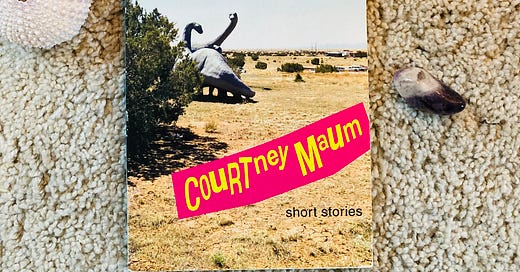Let's talk self-publishing
When to do it, how to do it, why I did it myself
Can I tell you a story?
I self-published a short story collection in 2010 when I was thirty-two years old. That’s not that long a time ago, relatively speaking, and it’s four years before I traditionally published my first novel.
What had happened was this: in my mid twenties, I had an agent and an editor lined up for my first novel, which was then called “The Blue Bear.” The editor (for whom I had already started editing per her marching orders) ended up leaving Doubleday before the book was finalized, and nobody else at the that imprint wanted to take it on. It was submitted to 18 editors outside of Doubleday, and none of them wanted it, either. I went—in the span of one New York City autumn—from thinking that my debut was going to come out with one of the country’s largest publishers, to hearing that it wasn’t wanted by anyone.
I was absolutely heartbroken. I had not left room in my central nervous system for this outcome. I didn’t even know it was a possibility—that excited and vested and interested editors could change their minds. (This was the first instance I thought, holy hell, why isn’t anyone telling writers this, which planted a seed for my 2020 publishing guidebook, BEFORE AND AFTER THE BOOK DEAL.)
I went into a tailspin. My then-agent said that he could sell a memoir of mine, so I started writing a memoir. Then I tried writing a multi POV novel. Then a collection of humorous essays, anything and everything that he (and I) deemed a “quick sell.” All those projects were rushed and low in quality.
I went dark on my agent. He went dark on me.
I left New York City for a rural cabin in the southern Berkshires.
I started to write short stories in addition to novel manuscripts that would live and die inside a drawer. After a few years, I had enough short stories for a collection. Some of them were published in literary magazine—many weren’t. I was smart enough to realize that the collection wasn’t polished nor cohesive enough to get me a new agent and a book deal. But I was at a place in my despair where I needed to have a book. I needed to have a tactile object that I could place into people’s hands. I needed my family and friends to view me as a writer—but not just the writer of pieces in obscure online magazines and literary magazines they didn’t have a subscription to—as the writer of a book.
Amazon’s self-publishing outlet CreateSpace existed back then, but I didn’t go with Amazon. (You can read my second novel TOUCH if you want to learn my beef with them.)
I wanted to work with real human beings. I wanted to be able to call the person working on the way my book looked on the telephone. I wanted to geek out about font and margin spacing with an actual person.
I chose to go with a small short-run printing company “Troy Book Makers” in upstate New York, founded by two independent booksellers, Eric Wilska and Susan Novotny. I decided I would do a limited run of 150 copies, and that when I sold through those, I would never make another book, regardless of demand.
And that is what I did! I took the production of my collection seriously: sourcing a great photo for the cover, getting a friend to help with graphic design. I priced the book at $12.95. Troy Bookmakers, because they are founded by booksellers, not only stocked the book in the local bookstores, but helped me organize two lovely events in local indies, too.
I didn’t feel embarrassed that I self-published my collection. I didn’t feel like a sell-out. I was excited to finally share work on my own terms.
Self-publishing that collection put years of energy and confidence back into my gas tank. I don’t think I would have been able to pick myself up after the heartbreak of my botched first book deal if I hadn’t put out “SMALL THINGS” on my own.
That experience is twelve years behind me. Here is what I’ve learned since about the benefits and pitfalls of self-publishing:




